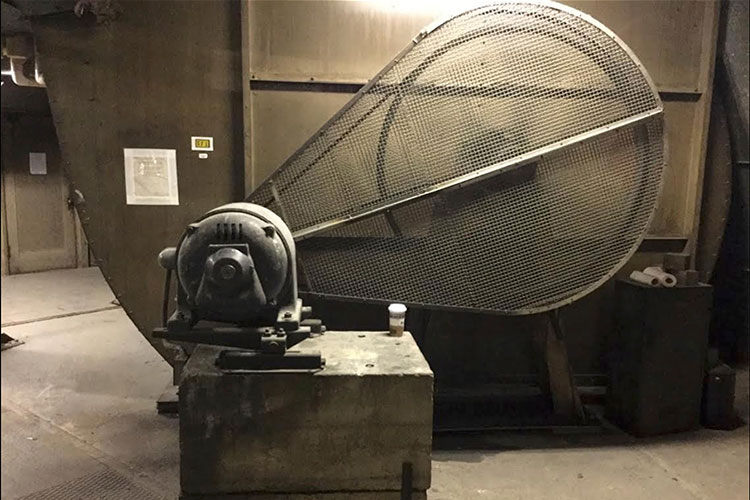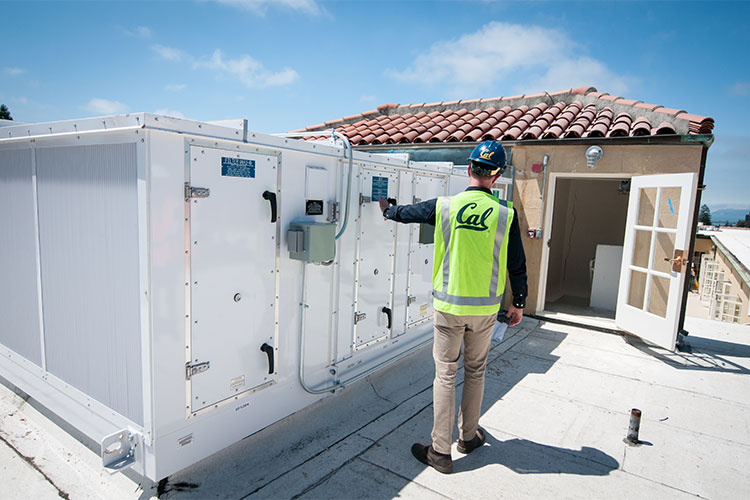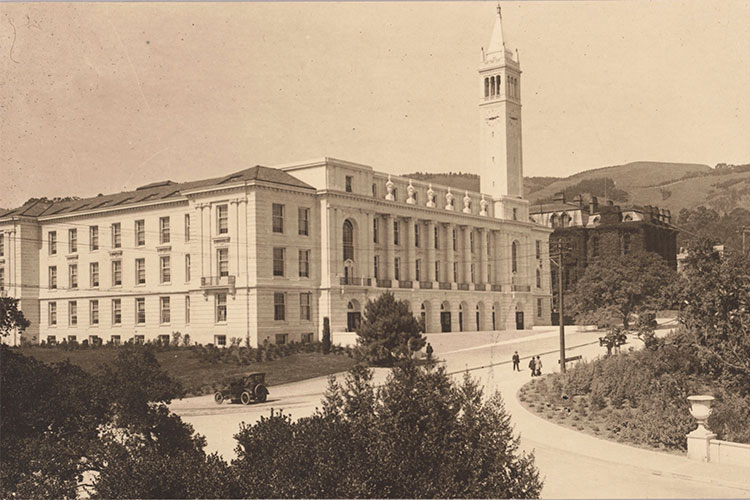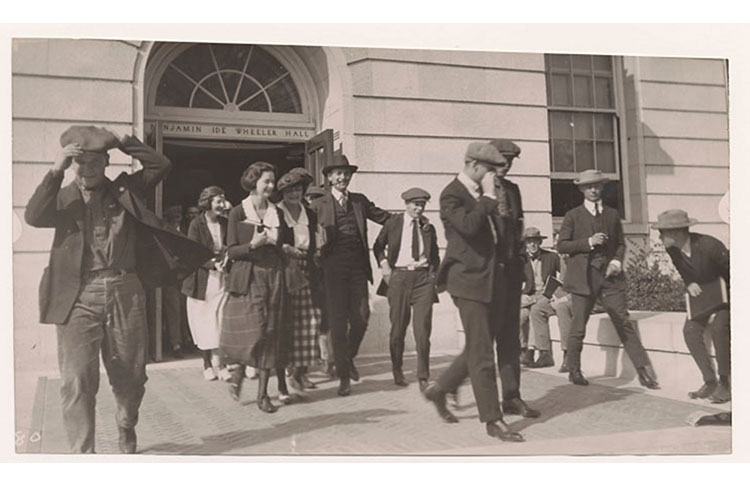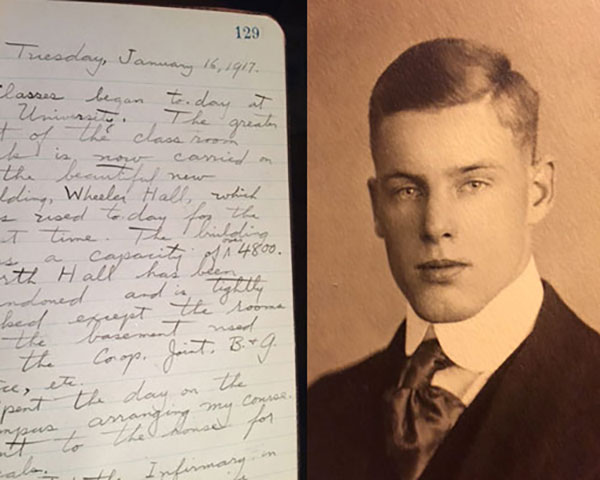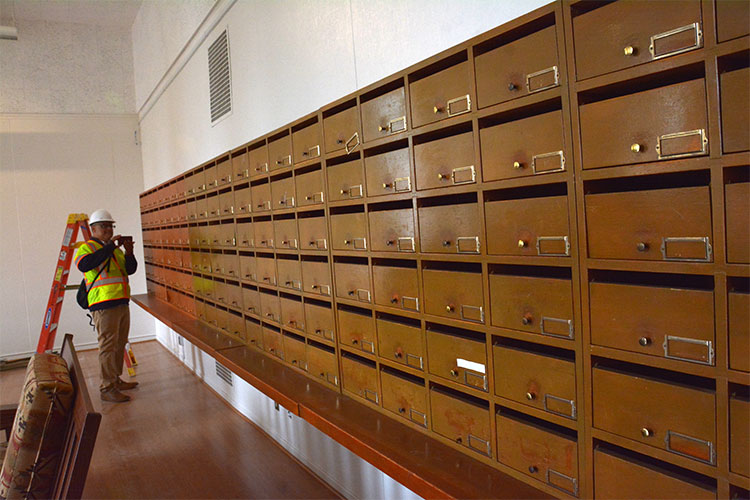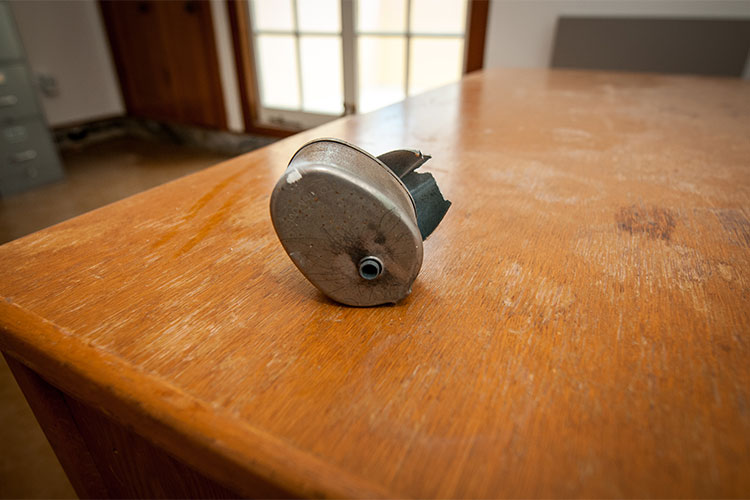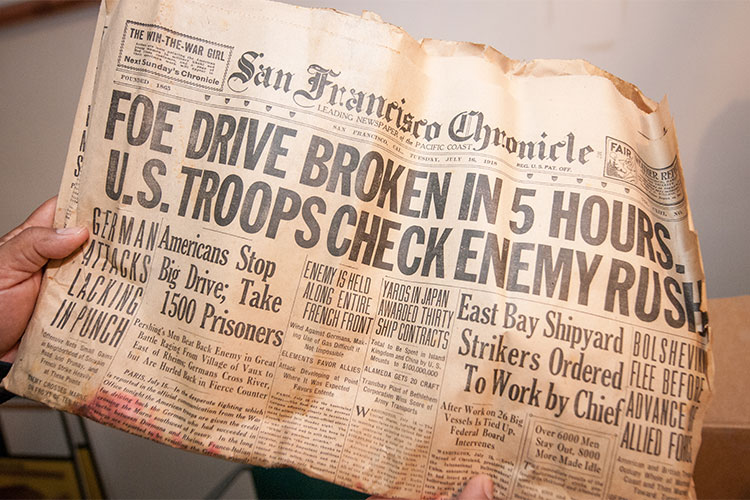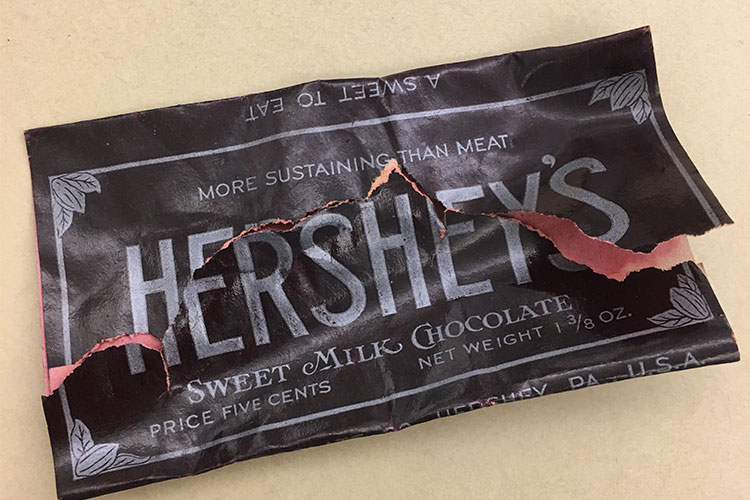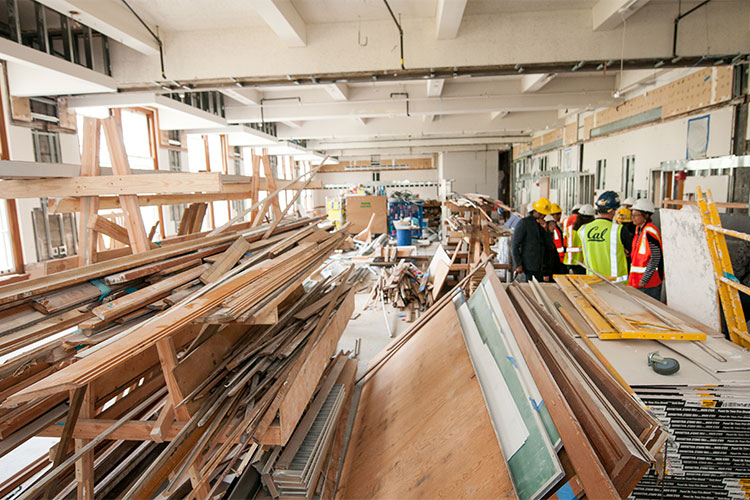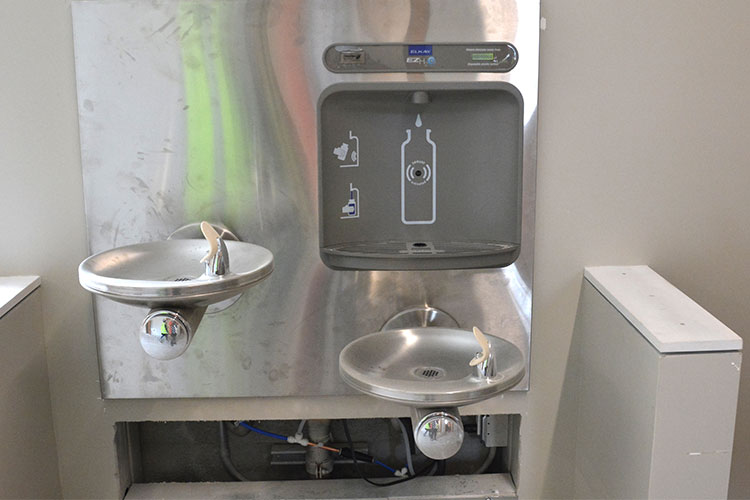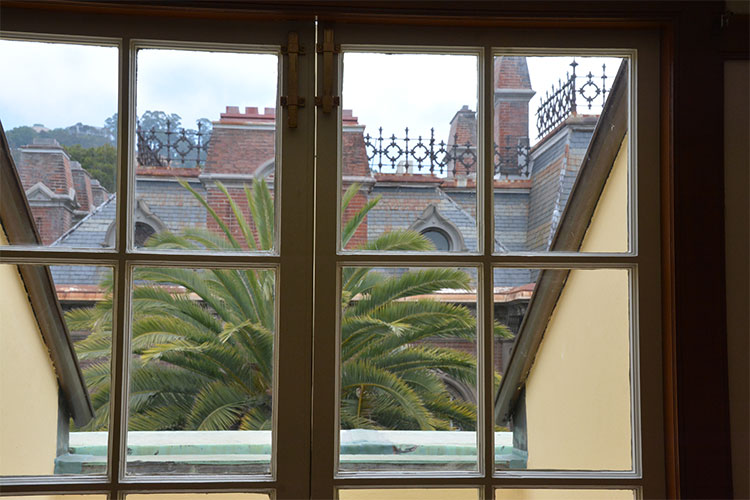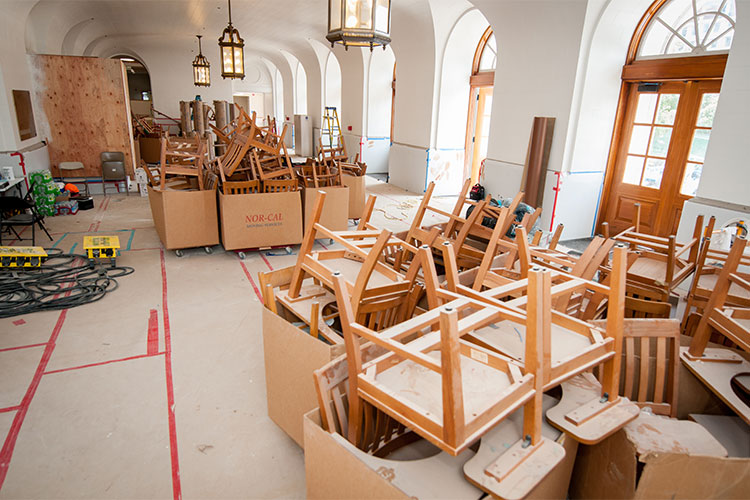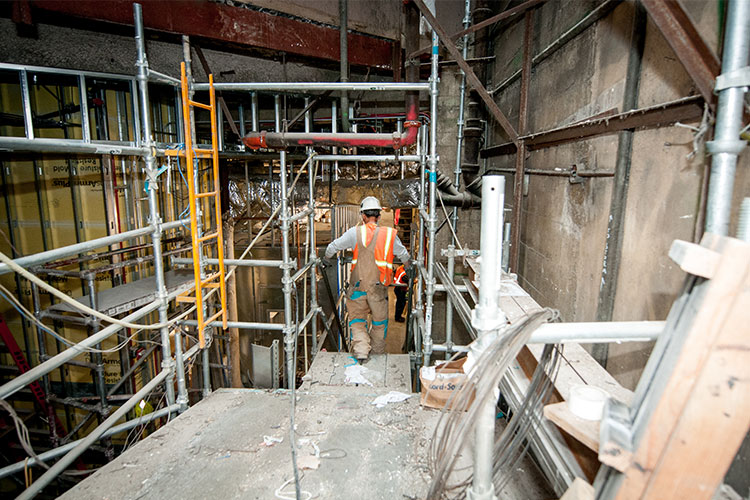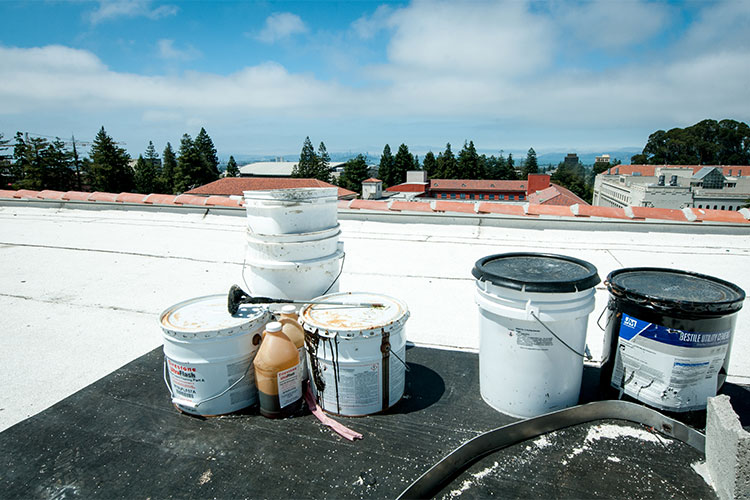Modernized Wheeler Hall reopens at age 100
No more stuffy, sleepy lectures; air circulation at Wheeler is all new

August 23, 2017
Historic Wheeler Hall, a 100-year-old classroom and office building that’s been the site of famous speeches and campus protests, reopens today after a major, year-long overhaul. But you’re not likely to see many of the changes; they’re hidden behind the walls.
What’s been transformed, however, is significant. It’s the way people will now experience the grand, four-story building designed by John Galen Howard – through modern systems for air heating and cooling, telecommunications, roofing and waterproofing, plus new elevators, improved accessibility and efficient lighting.
Gone are the century-old fans that failed to adequately push air through Wheeler, broken hallway water fountains, old electrical outlets, decades worth of ductwork gunk, rundown bathrooms, chipped paint and vents too small to adequately heat faculty offices.
Professors like Martha Olney who teach in 732-seat Wheeler Auditorium couldn’t be happier. On warm days, the lecture hall “would easily heat up to 80-plus degrees, and there was effectively no ventilation. There was no air,” says Olney, who holds Econ 1 there. “It was miserable for anyone trying to teach without sweating up a storm and for students trying to stay awake.”
But not everything old is getting tossed. Workers made a discovery worth keeping – trash dating back to World War I, sealed up in a Wheeler garbage chute. Among 20 large bags taken to The Bancroft Library were newspapers, a loyalty oath directive from the UC President’s office, student essays and a Hershey wrapper proclaiming chocolate “More Sustaining Than Meat.”
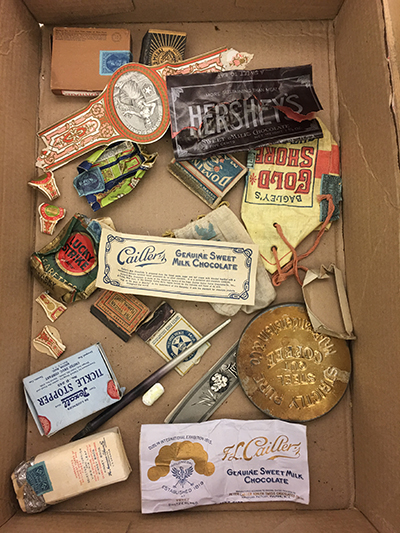
World War I-era trash found in a sealed-up garbage chute in Wheeler was of interest to the Bancroft Library. (Photo by Lara Michels, Bancroft Library)
“Most of it is World War I-era literature and propaganda from England to convince Americans to join the war,” says Lara Michels, the Bancroft’s head of archival processing. “We have about 100 pamphlets, 200 documents and 12 artifacts and will catalog many of the items as a kind of time capsule.”
Home to about 10 percent of the campus’s general assignment classrooms, Wheeler Hall had been closed since May 2016. The Wheeler Hall Renewal Project, managed by Berkeley Real Estate’s construction and design unit and funded by Berkeley Capital Renewal, will enter a second phase next summer, when Wheeler’s auditorium – the largest on campus, with about 700 seats – will close to get new seating, flooring and AV equipment.
“This building is heavily used and irreplaceable, and is home to our distinguished English Department,” says Catherine Koshland, vice chancellor for undergraduate education. “Chances are that every Berkeley undergraduate comes to Wheeler Hall for a class at some point during their years on campus. These new systems and building renovations will improve the comfort and physical experience of the space for faculty, students and staff.”
A wartime symbol of hope
Named for Benjamin Ide Wheeler, president of the University of California from 1899-1919, Wheeler Hall was built at a time of tremendous growth for the university. During his tenure, UCLA and other UC campuses were created or expanded, and he hired dozens of world-renowned faculty members.

Wheeler Hall is prominent in this Ansel Adams photo of students changing classes in 1966. (UC Berkeley photo)
During the 1899-1900 academic year, when Wheeler arrived, the Berkeley student body numbered 1,988, but by 1914-15, it had nearly tripled to 5,848 students. Multi-disciplinary classroom space was lacking, most faculty had no on-campus offices, and there was no auditorium for large, indoor events.
In January 1915, the regents authorized plans for a large classroom building to be created by Howard, supervising university architect.
Wheeler was to be built between Doe Library and Sather Gate and would primarily house the humanities. It became part of Howard’s central campus design, the Classical Core, built between 1900 and 1920. The other core structures – most with white granite exteriors, tile roofs and copper detailing – are Sather Tower, Hearst Memorial Mining Building, Doe Library and Wheeler, California, Durant, Gilman and LeConte halls.
Wheeler’s construction began in August 1915 and cost $715,994. The cornerstone was laid on Charter Day – March 23, 1916 – and in January 1917, the building opened, with the exception of the auditorium, which was finished in March.
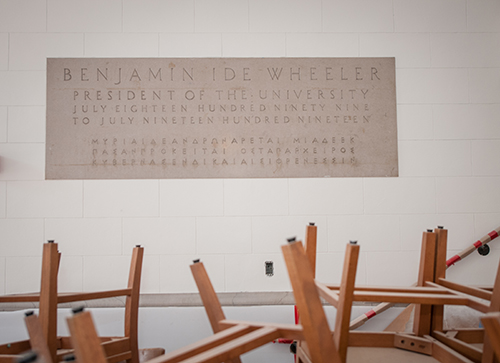
Wheeler Hall is named after Benjamin Ide Wheeler, UC president from 1899-1919. Wooden chairs stored in the lobby during the renewal project are below the plaque. (UC Berkeley photo by Keegan Houser)
Wheeler had 126 rooms, a 1,000-seat auditorium and a fourth story devoted to departmental and shared faculty offices. Its granite-sheathed exterior was given ornamental elements including Ionic columns and urns decorated with floral garlands, ram’s heads and flames – to symbolize the light of learning.
In May 1917, just after the United States had entered World War I, the university’s aging North Hall was demolished, and its replacement, Wheeler Hall, was touted at a ceremony as a wartime symbol of hope.
“As out of the destruction of Old North Hall comes the newer, the better, the more beautiful Wheeler Hall,” said Professor George C. Edwards at a May 15, 1917 farewell for North Hall. “I indulge the hope and entertain the belief that out of the world destruction now taking place there will emerge a newer, a better, a stronger, a more sympathetic, a more enduring world of humanity.”
Next: More auditorium upgrades
John Fiske, project manager for the Wheeler renewal project, says careful attention was paid during the past year’s upgrade to preserving the historic details of the building, which is on the National Register of Historic Places and is also a California Historic Landmark and a Berkeley City Landmark.
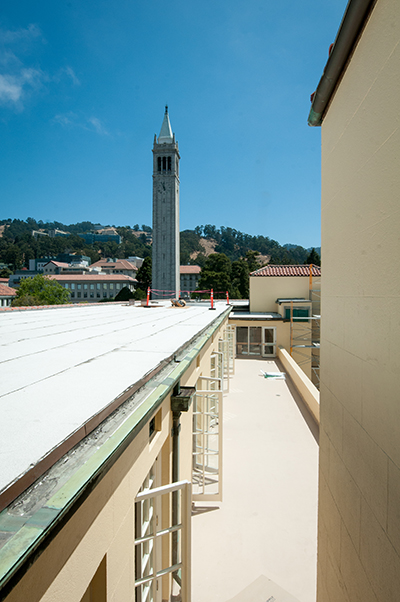
Architect John Galen Howard favored French dormer deck doors like these that look toward South Hall. They were refurbished and painted during the past year. (UC Berkeley photo by Keegan Houser)
For example, the original wooden doors of fourth floor offices, which open onto dormer decks – a John Galen Howard feature – were preserved through refurbishing, painting and waterproofing them, and Wheeler’s Western red cedar windows, several of them towering and arched, were repaired, not replaced.
“Buildings just aren’t built like Wheeler anymore. It has a certain feeling to the corridors and the rooms that you can’t find. The little decks off the individual offices, the wood trim and the granite are beautiful,” says Fiske, “and Wheeler’s got a lot of very interesting, funky spaces that are hidden away.”
Not only does Wheeler house the English department, which has offices on the second, third and fourth floors, but the College Writing Programs and outposts for several campus units, including the Disabled Students’ Program.
A new space in Wheeler created through the renewal project is Room 212. The large open room, created by removing several walls, will be available to faculty for project-based activities and hybrid classes that combine digital and traditional learning.
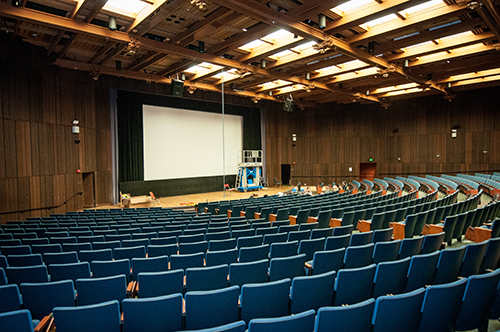
Wheeler’s auditorium, rebuilt in the early 1970s following a 1969 arson fire, will be upgraded next summer. (UC Berkeley photo by Keegan Houser)
One of the biggest improvements to Wheeler is the way air now moves through the building. Previously, large fans from 1916 had pushed air around Wheeler, including up through the floor and into the auditorium through holes behind and under each seat. Still, students were prone to nodding off during lectures, the air stuffy and warm.
After a Bay Area heat wave, “it would take three days for the auditorium to cool down after the fog rolled in,” says professor Olney. Huge industrial fans set up on stage didn’t help. “They blew papers everywhere,” she adds, “and were so loud they could drown out the projected voice of the instructor for students in the first few rows.”
Now, she says, “It’ll be great to be able to breathe.”
Project team
Contractor: Herrero Builders Inc.
Architect: Shah Kawasaki Architects Inc.
Project management: UC Berkeley Construction & Design
On-site construction coordinator: Cambridge CM Inc.
The new fans will pull air in from the outside, through existing and newly-cleaned ducts and then around Wheeler. A new duct configuration in the spacious auditorium includes vents above the ceiling that supply fresh air to the building’s occupants.
The auditorium, rebuilt in the early 1970s after being destroyed by an arson fire in January 1969, was where Ernest O. Lawrence in 1940 received the university’s first Nobel Prize (World War II kept him from flying to Sweden), the Rev. Dr. Martin Luther King Jr. spoke in 1957 and César Chávez delivered a May 1975 Cinco de Mayo speech.
It’s the only part of Wheeler that will close next May for improvements. “We’ll start work at the end of commencement,” says Fiske, “and finish in time for fall semester.”
